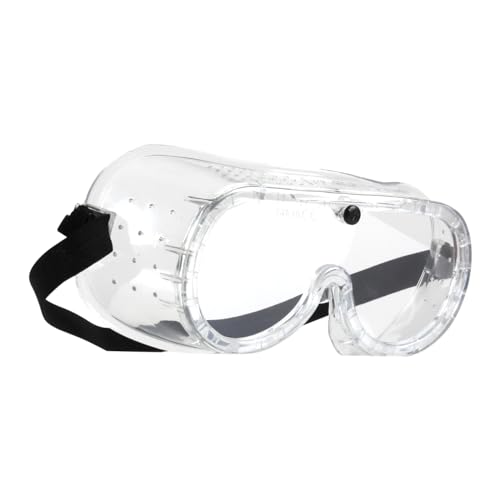How do safety goggles work?
Safety goggles are an essential piece of personal protective equipment (PPE) that can help protect your eyes from various hazards, including flying debris, chemicals, splashes, sparks, and even harmful radiation. These goggles work by providing a physical barrier between your eyes and potential dangers, ensuring that your eyes remain safe and protected in hazardous work environments.
Physical Protection
Safety goggles are designed to have a close-fitting, wraparound style that covers the entire eye area, including the sides. This design helps prevent any particles or hazards from entering the eyes from the front, top, or sides. The goggles have a durable frame that holds the lenses securely in place, ensuring that they stay in position even during vigorous movements or impacts.
The lenses of safety goggles are typically made of high-impact-resistant materials, such as polycarbonate, which is a tough and shatterproof material. This makes the goggles highly resistant to scratches, cracks, and impacts, providing reliable protection against flying objects or objects coming into direct contact with the eyes.
Chemical and Splash Protection
Safety goggles also offer protection against various liquids, chemicals, and splashes that can potentially harm the eyes. The goggles are designed with a tight seal around the eyes, preventing any liquids or chemicals from seeping into the eye area.
In addition to the seal, safety goggles often have an anti-fog coating or ventilation system to prevent fogging, especially when working in hot and humid environments. This feature ensures clear vision, allowing the wearer to effectively carry out their tasks without compromising safety.
Shield from Radiation
Some safety goggles are specifically designed to protect the eyes from harmful radiation, such as ultraviolet (UV) rays or intense light. These goggles feature specialized lenses that can filter out specific wavelengths of light or radiation, reducing the amount that reaches the eyes.
For example, safety goggles used in welding often have lenses that are darkly tinted to protect against the intense brightness and harmful UV rays emitted during the welding process. Similarly, safety goggles used in medical or laboratory settings may have lenses that block out UV or infrared (IR) radiation from certain equipment.
Comfort and Fit
Safety goggles are designed to be comfortable to wear for extended periods. They typically have an adjustable headband or strap that allows for a secure and customized fit. The headband or strap helps keep the goggles in place and prevents them from slipping off during work activities.
Some safety goggles also have cushioning or padding around the frame or nose bridge area to improve comfort and reduce pressure points. This makes them more comfortable to wear, especially when used for long periods.
Compliance with Safety Standards
High-quality safety goggles are manufactured and tested to meet specific safety standards, such as those set by organizations like the American National Standards Institute (ANSI) or the Occupational Safety and Health Administration (OSHA). These standards ensure that the goggles provide adequate protection and meet certain impact resistance, lens quality, and optical requirements.
When using safety goggles, it is important to choose the right type for the specific hazards you may encounter. Different work environments may require different levels of eye protection, and it is crucial to select goggles that comply with the appropriate safety standards and regulations.






